Evaluation of the Quality Parameters of a 4G-LTE Communications Base Station, Installed in a Rural Area of Peru
Volume 5, Issue 1, Page No 71-76, 2020
Author’s Name: Omar Chamorro-Atalaya1,a), Eduardo Pizarro–Mayta2, Dora Arce-Santillan1
View Affiliations
1Faculty of Engineering and Management, Universidad Nacional Tecnológica de Lima Sur, Perú
2Faculty of Electronic and Computer Engineering, Universidad Nacional Federico Villarreal, Perú
a)Author to whom correspondence should be addressed. E-mail: omar_chamorro1@hotmail.com
Adv. Sci. Technol. Eng. Syst. J. 5(1), 71-76 (2020); ![]() DOI: 10.25046/aj050109
DOI: 10.25046/aj050109
Keywords: Quality parameters, Communications Base Station, 4G-LTE technology, Rural zone, International Telecommunications Union
Export Citations
This article has to specify the quality parameters of a Communications Base Station with 4G-LTE technology, installed in a rural area of Peru. The problem of this investigation is due to the fact that many areas of the country do not have a communications network capable of covering the high demand of the inhabitants; this lack ultimately generates a gap in the capacity of information transfer and communications; since, since there is no connectivity between the inhabitants, it is very difficult to have access to information, and generate economic opportunities that allow the growth of this area, affected rural. To determine the quality of the implementation of a 4G-LTE network, it was sought to specify the characteristics of the quality parameters of a Mobile Telephony Communications Base Station such as signal level, SRN signal and signal quality and to perform a comparative analysis with what is established by the International Telecommunications Union (ITU), in its recommendation E-800. In addition, the level of relationship between the quality parameters (signal level, SRN signal and signal quality) was established, with the resolution of detecting that they comply with the ITU, this is confirmed by the optimal mobile phone coverage in rural areas, and that these have accessibility to the entire mobile phone network nationwide.
Received: 24 November 2019, Accepted: 22 December 2019, Published Online: 15 January 2020
1. Introduction
Within the framework of the information society, the level of penetration of goods and services linked to mobile communications is undoubtedly the starting point for promoting public policies that promote digital connectivity. However, there are still large gaps that exist in both extension (access) and depth (quality of access) in rural areas throughout the world. [1]
According to the report on the state of broadband in Latin America and the Caribbean 2016, released by the Economic Commission for Latin America and the Caribbean (ECLAC), the number of internet users grew from 2000 to 2015 by 10, 6%, however, the problems regarding connection speeds and service access between urban and rural areas still make a big difference. [2]
The choice of technology to provide Internet connectivity services in general is varied, which is why, of all known technologies, very few or almost none is applicable to provide Internet connectivity services in rural areas, without However, due
* Omar Freddy Chamorro Atalaya. Jr. Los Damascos 986. Los Olivos, Lima, Perú, 968053089 & omar_chamorro1@hotmail.com
to its ability to access and reach, mobile phone technology easily adapts to the needs of the rural population. [3]
In recent years, there has been a rapid and continuous evolution of technologies in the field of mobile communications. [4] Mobile devices incorporate more and better services, and in addition to improving the quality of communications, it makes possible that many services are available to us. [5]
Given this increase in the demand for telecommunications services, with an increasingly demanding user profile in terms of mobility, availability, bandwidth or autonomy, the efforts of the operators to design and implement an infrastructure, capable of Support this increase in traffic level. [6]
Mobile connectivity has become a fundamental part of our lives, since they have become a determining technology in the way the user interprets the exchange of information. [7] The optimization of mobile telephony infrastructure is a frequent and necessary practice in operational telecommunications networks, in all countries of the world, with the purpose of increasing the efficiency of its operation or performance to improve its quality of service. [8]
LTE technology is designed to work as a system with the ability to significantly improve user experiences with total mobility, since it uses the Internet Protocol (IP) to perform any type of end-to-end data traffic with good quality of service and in the same way the voice traffic, which allows a better integration with other multimedia services. [9]
The Peruvian mobile market is dynamic and growing, one could say that in general the user rate is one cell phone per inhabitant, as of March 2016, there were 30 million 98 thousand 298 active lines; The quality of service is the Achilles’ heel of the Peruvian market operators, dissatisfaction in general reaches 36% of users. [10] Therefore, the priority of being able to count on the high availability of the service has motivated to evolve technologically in physical equipment that allows to carry effective telephony with quality of service. [11]
Given the mobility of users and the number of calls made daily, maintaining the quality of mobile voice service becomes a task that requires continuous monitoring and detection of areas where the service can be degraded. For this, the ITU (International Telecommunications Union), in recommendation E.800, has defined a series of network parameters as indicators of service quality. [12]
Although the predominant technology in the world today is LTE, even 2G networks are used mostly in rural areas or with very basic user profiles. [13] In rural areas there is a problem that is the densification and optimization of the 4G LTE network, which affects the quality of service offered by the network. [14]
In Peru, the deployment of 4G LTE technology has been carried out slowly and not entirely in some cities; this due to economic, social due and even cultural factors. [15] However, despite the important deployment of communications base station implementation by operators, according to a study conducted by OSIPTEL (Supervisory Body for Private Investment in Telecommunications), it is estimated that by 2021 there would be a gap of more than 15,200 stations to be installed. [16]
In addition, in the era of globalization that we currently live, the Internet has been essential in the communication of people worldwide, up to that point that sounds crazy without having this service in homes, businesses, companies, schools and universities. Thus causing a massive dependence and magnification of the service nationwide. That is where the main problem lies, since telecommunications companies focus their resources on the large cities located on the coastal coast and neglect the rest of the country, especially in rural areas where Internet access is almost non-existent or of poor quality. And from this problem was born the idea of analyzing the quality parameters of the implementation of a 4G-LTE Communications Base Station, installed in a Rural Area of Peru.
In this sense, this article describes the results obtained as part of the process of evaluating the quality parameters of a communications base station, implemented in a rural area of Peru. For this analysis the KPI (Key performance Indicator) defined for 4G LTE Technology was used.
2. Methodology
2.1. Research level
The research level is of the Descriptive-Correlational type, since it is sought to specify the characteristics of the quality parameters of a Mobile Telephony Communications Base Station such as signal level, signal SRN and signal quality and perform a comparative analysis with established by the International Telecommunications Union (ITU), in its recommendation E-800. [17]
And correlational, since, the relationship between the quality parameters (signal level, signal SRN and signal Quality) is determined, in order to verify that they comply with the ITU, thus guaranteeing optimal mobile phone coverage in the rural areas, and that these have accessibility to the entire mobile phone network nationwide. [18]
2.2. Population and sample
The unit of analysis is each of the elements that constitute the population and therefore the sample [17]; In that sense, my only unit of analysis will be Communications Base Station with 4G-LTE technology, whose implementation characteristics are shown below. The following table details the characteristics that the 700MHz band antennas possess, as well as characteristics such as Azimuth (inclination angle), the type of technology, Cell ID and the Band or frequency.
| Site: IC00243 | |||
| Name: | 4GIC24371 | 4GIC24372 | 4GIC24373 |
| Azimuth: | 20 | 150 | 275 |
| Technology: | LTE | LTE | LTE |
| Cell ID: | 4 | 5 | 6 |
| Band or Freq.: | 700 | 700 | 700 |
Table 1. Characteristics of the antennas in the 700 MHz band
As seen in the previous table there are three antennas, each one has three angles of inclination of 20 °, 150 ° and 275 °, the technology is LTE with 700MHz band. The following table shows the characteristics of the antennas in the 2100MHz band.
| Site: IC00243 | |||
| Name: | 4GIC24341 | 4GIC24342 | 4GIC24343 |
| Azimuth: | 20 | 150 | 275 |
| Technology: | LTE | LTE | LTE |
| Cell ID: | 1 | 2 | 3 |
| Band or Freq.: | 2100 | 2100 | 2100 |
Table 2. Characteristics of the antennas in the 2100 MHz band
As seen in the previous table there are three antennas, each one has three angles of inclination of 20 °, 150 ° and 275 °, the technology is LTE with a band of 2100MHz.
The following figure shows the Topology of connection of communication equipment that will be considered at the time of the implementation of the transmitting base station, with 4G-LTE technology.
 Figure 1: Equipment connection topology
Figure 1: Equipment connection topology
In the previous figure, it is observed that a Baseband 6630 communication device will be used; which will support 4G technology (6630 LTE); in turn, the Baseband 6630 equipment will be connected to 3 RRU 4415 radio equipment (4G AWS: 1900MHz / 2100mHz) and 3 RRU 2217 radio equipment (4G-LTE: 700 MHz); The term RRU means “Remote Radio Unit”.
Another important point that is convenient to detail are the characteristics of the radio equipment, as well as the antennas to be used, although it is true in the previous point the equipment was listed, then they detail certain particularities of the equipment used in the implementation process, such as frequency of operation, quantity of equipment and manufacturing brand.
| Equipment | Quantity | Technology to install |
| Radio equipment to install | 3 | RRU 2217 |
| Baseband to install | 1 | RBS 6630 |
| Antenna to install | 1 | HUAWEI ASI4517R3v06 |
| Rectifier and battery cabinet | 1 | Rectifier ZTE |
| Equipment cabinet | 1 | Equipment cabinet ZTE EX2 |
| Others | 9 | Power cable 30m |
| 6 | Fiber optic cable 50m | |
| 5 | Grounding rods | |
| 25 meters | Cable GND |
Table 3. Equipment and antennas to be used in the implementation process 4G-LTE
2.3. Data collection instrument
The instrument used in the investigation was the technical measurement reports, which details the characteristics of the quality parameters of a Mobile Telephone Communications Base Station such as signal level, signal SRN and signal quality.
3. Results
In order to determine the optimum quality parameters of the communications base station, the signal level, signal SRN and signal quality, on each carrier of the communications base station, was analyzed using the Smart Rollout Support program; These results are compared with what is established by the International Telecommunications Union (ITU), in its recommendation E-800A.
This entity indicates that the KPIs for 4G are the following: [19]
- Signal level: It is the average power received at the terminal. It is a measure of the signal and serves as the main indicator of coverage. An acceptable value of this measure is greater than -100dBm.
- Signal SRN: It is the ratio of power between the reference signal and interference plus noise. An acceptable value is greater than or equal to 20dB.
- Signal Quality: It is the relationship between the signal and the interference. An acceptable value of this measure is greater than -15dB.
Next, the following figure shows the results obtained from the 4GIC24371 antenna operational test with azimuth 20° with 700MHz carrier.
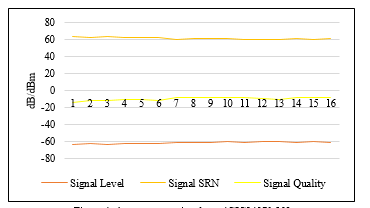 Figure 4: Antenna operational test 4GIC24371 20°
Figure 4: Antenna operational test 4GIC24371 20°
The previous figure shows that the average signal level is -61,375; The signal SRN is 61,375 and the signal quality is -9,5625; comparing these results with those described above it can be indicated that the antenna 4GIC24371 at an angle of inclination 20 °; It meets the quality parameters.
Next, the following figure shows the results obtained from the 4GIC24372 antenna operational test with azimuth 150 ° with 700MHz carrier.
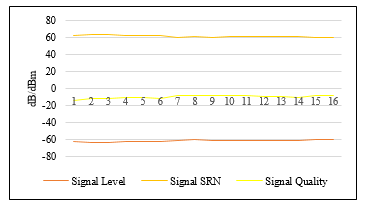 Figure 5: Antenna operational test 4GIC24372 150°
Figure 5: Antenna operational test 4GIC24372 150°
The previous figure shows that the average signal level is -61.5; The signal SRN is 61.5 and the signal quality is -9.6875; comparing these results with those described above it can be indicated that the antenna 4GIC24372 at an angle of inclination 150 °; It meets the quality parameters.
Next, the following figure shows the results obtained from the 4GIC24373 antenna operational test with azimuth 275 ° with 700MHz carrier.
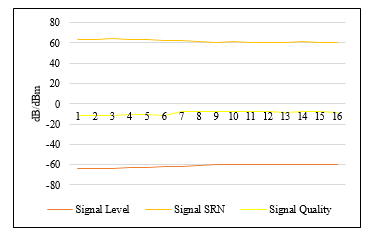 Figure 6: Antenna operational test 4GIC24373 275°
Figure 6: Antenna operational test 4GIC24373 275°
The previous figure shows that the average signal level is -61.5; The signal SRN is 61.5 and the signal quality is -9.6875; comparing these results with those described above it can be indicated that the antenna 4GIC24372 at an angle of inclination 150 °; It meets the quality parameters.
Next, the following figure shows the results obtained from the 4GIC24373 antenna operational test with azimuth 275 ° with 700MHz carrier.
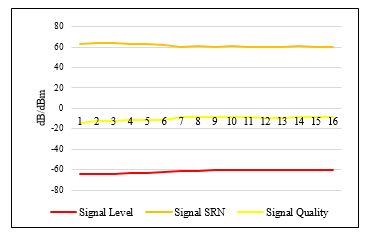 Figure 7: Antenna operational test 4GIC24341 20°
Figure 7: Antenna operational test 4GIC24341 20°
The previous figure shows that the average signal level is -61.4375; The signal SRN is 61,375 and the signal quality is -9,575; comparing these results with those described above it can be indicated that the antenna 4GIC24341 at an angle of inclination 20 °; It meets the quality parameters.
Next, the following figure shows the results obtained from the 4GIC24342 antenna operation test with azimuth 150 ° with 2100MHz carrier.
 Figure 8: Antenna operational test 4GIC24342 150°
Figure 8: Antenna operational test 4GIC24342 150°
The previous figure shows that the average signal level is -61.4375; The signal SRN is 61.4375 and the signal quality is -9.45; comparing these results with those described above it can be indicated that the antenna 4GIC24342 at an angle of inclination 150 °; It meets the quality parameters.
Next, the following figure shows the results obtained from the 4GIC24343 antenna operational test with azimuth 275 ° with 2100MHz carrier.
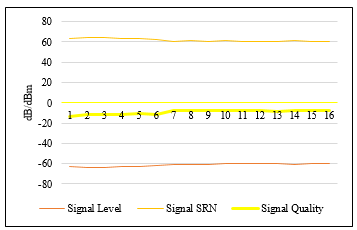 Figure 9: Antenna operational test 4GIC24343 275°
Figure 9: Antenna operational test 4GIC24343 275°
The previous figure shows that the average signal level is -61,375; The signal SRN is 61.3125 and the signal quality is -9.5125; comparing these results with those described above it can be indicated that the antenna 4GIC24343 at an angle of inclination 275 °; It meets the quality parameters.
4. Statistical analysis
The following table shows the result of the Pearson correlation test for the first carrier of the Communications Base Station; which will determine if there is an association between the quality parameters in analysis, such as signal level, signal SRN and signal quality, measured in the Mobile Telephony Communication Base Station. This test was performed using the SPSS statistical program.
Table 4. Pearson’s correlation of the parameters of the first carrier
| Signal Level | Signal SRN | Signal Quality | ||
| Signal Level 4GIC24371 20° | Pearson’s correlation | 1 | ,936** | ,914** |
| Sig. (bilateral) | ,000 | ,000 | ||
| Signal SRN 4GIC24371 20° | Pearson’s correlation | ,936** | 1 | ,869** |
| Sig. (bilateral) | ,000 | ,000 | ||
| Signal Quality 4GIC24371 20° | Pearson’s correlation | ,914** | ,869** | 1 |
| Sig. (bilateral) | ,000 | ,000 | ||
| Signal Level 4GIC24372 150° | Pearson’s correlation | 1 | ,935** | ,832** |
| Sig. (bilateral) | ,000 | ,000 | ||
| Signal SRN 4GIC24372
150° |
Pearson’s correlation | ,935** | ,846** | |
| Sig. (bilateral) | ,000 | ,000 | ||
| Signal Quality 4GIC24372 150° | Pearson’s correlation | ,832** | ,846** | |
| Sig. (bilateral) | ,000 | ,000 | ||
| Signal Level 4GIC24373 275° | Pearson’s correlation | 1 | ,950** | ,845** |
| Sig. (bilateral) | ,000 | ,000 | ||
| Signal SRN 4GIC24373 275° | Pearson’s correlation | ,950** | ,854** | |
| Sig. (bilateral) | ,000 | ,000 | ||
| Signal Quality 4GIC24373 275° | Pearson’s correlation | ,845** | ,854** | |
| Sig. (bilateral) | ,000 | ,000 | ||
As Pearson’s correlation coefficient is shown in the previous table, it is interpreted as follows, for each indicator. [17]
- Signal Level – Signal SRN (4GIC24371 20 °): There is a very high significant ratio of 0.936 between the Signal Level and the Signal SRN.
- Signal SRN – Signal Quality (4GIC24371 20 °): There is a significant high ratio of 0.869 between the Signal SRN and the Signal Quality.
- Signal Quality – Signal Level (4GIC24371 20 °): There is a very high significant 0.914 ratio between Signal Quality with Signal Level.
- Signal Level – Signal SRN (4GIC24372 150 °): There is a very high significant ratio of 0.935 between the Signal Level and the Signal SRN.
- Signal SRN – Signal Quality (4GIC24372 150 °): There is a significant high ratio of 0.846 between the Signal SRN and the Signal Quality.
- Signal Quality – Signal Level (4GIC24372 150 °): There is a significant high ratio of 0.832 between Signal Quality and Signal Level.
- Signal Level – Signal SRN (4GIC24373 275 °): There is a very high significant ratio of 0.950 between the Signal Level and the Signal SRN.
- Signal SRN – Signal Quality (4GIC24373 275 °): There is a significant high ratio of 0.854 between the Signal SRN and the Signal Quality.
- Signal Quality – Signal Level (4GIC24373 275 °): There is a significant high ratio of 0.845 between Signal Quality with Signal Level.
The following table shows the result of the Pearson correlation test for the second carrier of the Communications Base Station.
| Signal Level | Signal SRN | Signal Quality | ||
| Signal Level 4GIC24341 20° | Pearson’s correlation | 1 | ,958** | ,880** |
| Sig. (bilateral) | ,000 | ,000 | ||
| Signal SRN 4GIC24341 20° | Pearson’s correlation | ,958** | 1 | ,890** |
| Sig. (bilateral) | ,000 | ,000 | ||
| Signal Quality 4GIC24341
20° |
Pearson’s correlation | ,880** | ,890** | 1 |
| Sig. (bilateral) | ,000 | ,000 | ||
| Signal Level 4GIC24342
150° |
Pearson’s correlation | 1 | ,958** | ,903** |
| Sig. (bilateral) | ,000 | ,000 | ||
| Signal SRN 4GIC24342
150° |
Pearson’s correlation | ,958** | ,850** | |
| Sig. (bilateral) | ,000 | ,000 | ||
| Signal Quality 4GIC24342
150° |
Pearson’s correlation | ,903** | ,850** | |
| Sig. (bilateral) | ,000 | ,000 | ||
| Signal Level 4GIC24343 275° | Pearson’s correlation | 1 | ,933** | ,926** |
| Sig. (bilateral) | ,000 | ,000 | ||
| Signal SRN 4GIC24343 275° | Pearson’s correlation | ,933** | ,895** | |
| Sig. (bilateral) | ,000 | ,000 | ||
| Signal Quality 4GIC24343 275° | Pearson’s correlation | ,926** | ,895** | |
| Sig. (bilateral) | ,000 | ,000 | ||
Table 5. Pearson’s correlation of the parameters of the second carrier
As Pearson’s correlation coefficient is shown in the previous table, it is interpreted as follows, for each indicator. [17]
- Signal Level – Signal SRN (4GIC24341 20 °): There is a very high significant ratio of 0.958 between the Signal Level and the Signal SRN.
- Signal SRN – Signal Quality (4GIC24341 20 °): There is a significant high ratio of 0.890 between the Signal SRN and the Signal Quality.
- Signal Quality – Signal Level (4GIC24341 20 °): There is a significant high ratio of 0.880 between Signal Quality with Signal Level.
- Signal Level – Signal SRN (4GIC24342 150 °): There is a very high significant ratio of 0.958 between the Signal Level and the Signal SRN.
- Signal SRN – Signal Quality (4GIC24342 150 °): There is a significant high ratio of 0.850 between the Signal SRN and the Signal Quality.
- Signal Quality – Signal Level (4GIC24342 150 °): There is a very high significant 0.903 ratio between Signal Quality with Signal Level.
- Signal Level – Signal SRN (4GIC24343 275 °): There is a very high significant ratio of 0.933 between the Signal Level and the Signal SRN.
- Signal SRN – Signal Quality (4GIC24343 275 °): There is a significant high ratio of 0.895 between the Signal SRN and the Signal Quality.
- Signal Quality – Signal Level (4GIC24343 275 °): There is a very high significant ratio of 0.926 between Signal Quality with Signal Level.
5. Discussion
In relation to the results of this research, the following discussions are held below:
In relation to the quality parameters, which present optimal operating values, these results are similar to those carried out at the Real Plaza Santa Clara Shopping Center, where it is observed that when implementing 4G technology; 100% of the measures taken have levels greater than -95dBm. Depending on the allowed range (RSRP> – 100dBm), the values obtained are entirely within this range. This ensures optimal 4G coverage within the CC with levels that exceed those obtained in the simulations. [19]
In relation to the association of the quality parameters, it can be affirmed that the results comply with what was indicated by the investigation of the Canary Islands Government, which indicates that Signal Quality is also measured by the Signal SRN relationship, the higher the value of the Signal SRN higher quality will have the same. [20]
Optimal signal coverage is obtained with the results. This is supported by the KPI levels established by the International Telecommunications Union (ITU), in its recommendation E-800A. [19]
6. Conclusions
It is concluded that the results obtained in relation to the transmission quality parameters of the Telephone Base Station, signal level, signal SRN and signal Quality, comply with the provisions of the International Telecommunication Union (ITU), in its E-800 recommendation.
It is concluded that there is a very high significant relationship between the Signal Level and the Signal SRN; there is a significant high relationship between the Signal SRN with the Signal Quality and there is a high significant relationship between the Signal Quality with Signal Level.
Conflict of Interest
The authors declare no conflict of interest.
Acknowledgment
The authors wish to recognize and thank the National Technological University of Lima South Lima for their support of this investigation and
- Silva, A. (2018). A regional look at access and possession of information and communications technologies – TIC, based on censuses. CEPAL Magazine, 167-171.
- Radicelli, C., Pomboza, M., & Cepeda, L. (2017). Connectivity to the Internet in rural areas using DTT (DVB-RCT2) technologies, or mobile telephony (4G-LTE) •. DYNA, 319-324.
- Ibarra, L. (2016). Technological Characteristics of 3G and 4G LTE mobile systems: Current situation in Ecuador. Catholic University of Ecuador, Guayaquil.
- Acevedo, R. (2017). Automatic planning of parameters in LTE Networks through Graph theory. University of Malaga, Malaga.
- Gracía, F. (2017). Prototype of a 4G Base Station, using Open Air Interface. University of Granada, Granada.
- Liu, H. (2016). Evaluation of a Software based LTE Base station. Higher Technical School of Telecommunications Engineering of Barcelona, Barcelona.
- Jiménez, J., & Ochovo, J. (2017). Comparative Evaluation of Mobile Networks. Polytechnic University of Madrid, Madrid.
- Limonchi, C. (2016). Optimization proposal for the Access Network in the 1900 MHz Band of the Mobile Bitel Operator to Improve Coverage in the Chiclayo Zone 2016. Juan Mejía Baca University, Chiclayo.
- Alvarez, R. (2016). Improvement of the Quality of Service in 4G Networks Applying Offloading Technology. Santa María Catholic University, Arequipa.
- Guerrero, C. (2016). Determination of Satisfaction Indexes of cell phone customers to improve the quality of service in the Province of Huancayo. National University of Central Peru, Huancayo.
- Jara, C. (2017). Technological Renewal GSM / UMTS / LTE SWAP project 2014-2015. Private University of Tacna, Tacna.
- Marín, M. (2017). System for Measuring and Analysis of Call Establishment Time. University of Chile, Santiago de Chile.
- Córdova, R. (2019). Design of a scalable LTE network for the transmission of video applied to citizen security. Peruvian University of Applied Sciences, Lima.
- Chino, E. (2018). Design of an advanced 4G LTE Network improving the Access Network Identification through Heterogeneous Cell deployment for the City of Juliaca. National University of the Altiplano, Juliaca.
- Puel, D. (2017). Design of a 4G-LTE Outdoor Res from América Movil Perú SAC, for the Province of Sechura. National University of Piura, Piura.
- More, J., Trelles, J., & Pacheco, L. (2017). Supervisory Body of Private Investment in Telecommunications.
- Hernández, R. (2018). Investigation Methodology Mexico: Mcgraw Hill
- Arias, F. (2016). Research project Caracas: Episteme
- Chancasana, M. (2016). Design of a 4G-LTE Indoor Network for the Real Plaza Santa Clara Shopping Center. Pontifical Catholic University of Peru
- Government of the Canary Islands (2016). Telecommunications and computer science. Spain
Citations by Dimensions
Citations by PlumX
Google Scholar
Scopus
Crossref Citations
No. of Downloads Per Month
No. of Downloads Per Country
